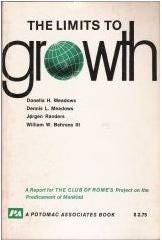
A couple of years ago, the historian Anton Howes looked at the question of why games like Dungeons & Dragons took so long to be developed. Unlike the laser printer, for example, D&D does not require advanced technology for its invention in the 1970’s. So why did it appear so late in history? Why was it an “idea behind its time”?
After examining a number of different potential reasons—developments in bureaucracy, numeracy, printing—Howes concludes that perhaps it’s because invention itself is so hard and rare:
The reason we have had so many low-hanging fruit throughout history is just because very few people ever bother to think of how to do things differently. We are, most of us, quite set in our ways. So even today, when there are many more inventors alive than at any previous point in human history, the fermenting fruit still abound.
However, I’d like to propose an alternative speculative theory, one that is probably more of a just-so story than anything rigorous: Dungeons & Dragons arose in the 1970’s because that is when simulating entire virtual worlds finally became conceivable and was also introduced to a broader public.
While numeracy is necessary for Dungeons & Dragons (D&D was first published in 1974), I actually think it’s something more precise that might have been needed for its invention: computation and modeling of the world itself in silico. Obviously, you don’t need computers to play D&D—pencil and paper and dice are sufficient—so perhaps it’s just the idea itself that computational modeling of the world is possible that provided the intellectual terroir for D&D to arise.
And that is what modern computers provide. While personal computers began to trickle into reality by the early 1970’s, they really weren’t much of a big deal until 1977, with the advent of the Apple II, TRS-80, Commodore PET,. and the Apple II (what an annus mirabilis for computers!). However, digital computers had been around for several decades by that point, arising in the 1940’s and 1950’s, and being used almost immediately for simulation, from weather prediction to early experiments in artificial life. Computers were machines designed to slurp up and and knead data, and a lot of that numerical mastication was done for prediction purposes.
Furthermore, at least in my personal mythology of simulation and computation, one important development was the creation of World3 and the publication of Limits to Growth in 1972, fifty years ago.
In 1972, the Club of Rome released this book about a system dynamics model of the entire planet. And it was a massive phenomenon. As per Wikipedia “some 30 million copies of the book in 30 languages have been purchased” since The Limits to Growth’s publication. The underlying system dynamics model, World3, was quite complex (though perhaps not particularly sophisticated by our modern standards), and encompasses details on the world agriculture system, global resources, the Earth’s population, and more. This watershed event unleashed a lot of discussion and debate about the future of human civilization.
So, perhaps then, it was the confluence of widespread computation becoming more available and seeing examples of simulating societies that prompted Dungeons & Dragons to finally become a realistic possibility.
Does this all make sense? Maybe. Dungeons & Dragons had precursors that predate The Limits to Growth, so I’m not sure how important World3 itself was to D&D, though it certainly could have been influenced by the spread of computational simulation more broadly. D&D is also about storytelling and not just simulation, though I’d like to think that storytelling is itself a kind of simulation. And there is the caveat that I have not actually played D&D—to my regret!—so some of this might be utter nonsense.
Nevertheless, I’d like to think that an ability to conjure a world in one’s mind—and describe it quantitatively—is intimately tied to the advent of computational simulation of society.
Postscript update: it looks like the history of D&D is much more complex and winding than my simple and speculative theory above! Alas, it doesn’t really seem possible that ‘The Limits to Growth’ was an impact on D&D and that these games definitely arose from a longer tradition of tabletop wargames; ‘Playing at the World’ is the essential resource here on all of this history. Apparently, even the use of six-sided dice in these games dates back to the Nineteenth Century! That being said, the use of polyhedral dice in these games does seem to have only arose since the advent of computers (first around the time of Dungeons & Dragons, as per ‘Playing at the World’) and RAND was involved in some D&D precursors. Not sure it’s worth making too much of all this though, and this theory will have to remain an entertaining but inaccurate just-so story after all…
I recently began creating a list of modern wisdom literature for our current era, a period of time which I have taken to calling The Whirligig:
Our current era is overwhelming, combining rapid technological change, a feeling of being unmoored from the past, a sense of disenchantment, and even decadence and stasis, despite change. What to call this instability amidst dizzying change? The Whirligig Age.
The entire list of wisdom literature is here.
Also, I recorded a podcast about my essay on GPT-3 and alternate histories. Take a listen here.
A few links worth checking out:
Legendary bacterial evolution experiment enters new era: “A laboratory has been growing 12 populations of E. coli since 1988 — this year, the cultures will get a new custodian.” I love these kinds of long-term scientific projects.
The Sea of Tranquility by Emily St. John Mandel: A delightful novel.
When should an idea that smells like research be a startup? A great and thoughtful piece by Ben Reinhardt.
How common is independent discovery? “Relatively common for ideas we know will be big, but not so much for the rest.” Good overview and synthesis from Matt Clancy.
Until next time.


